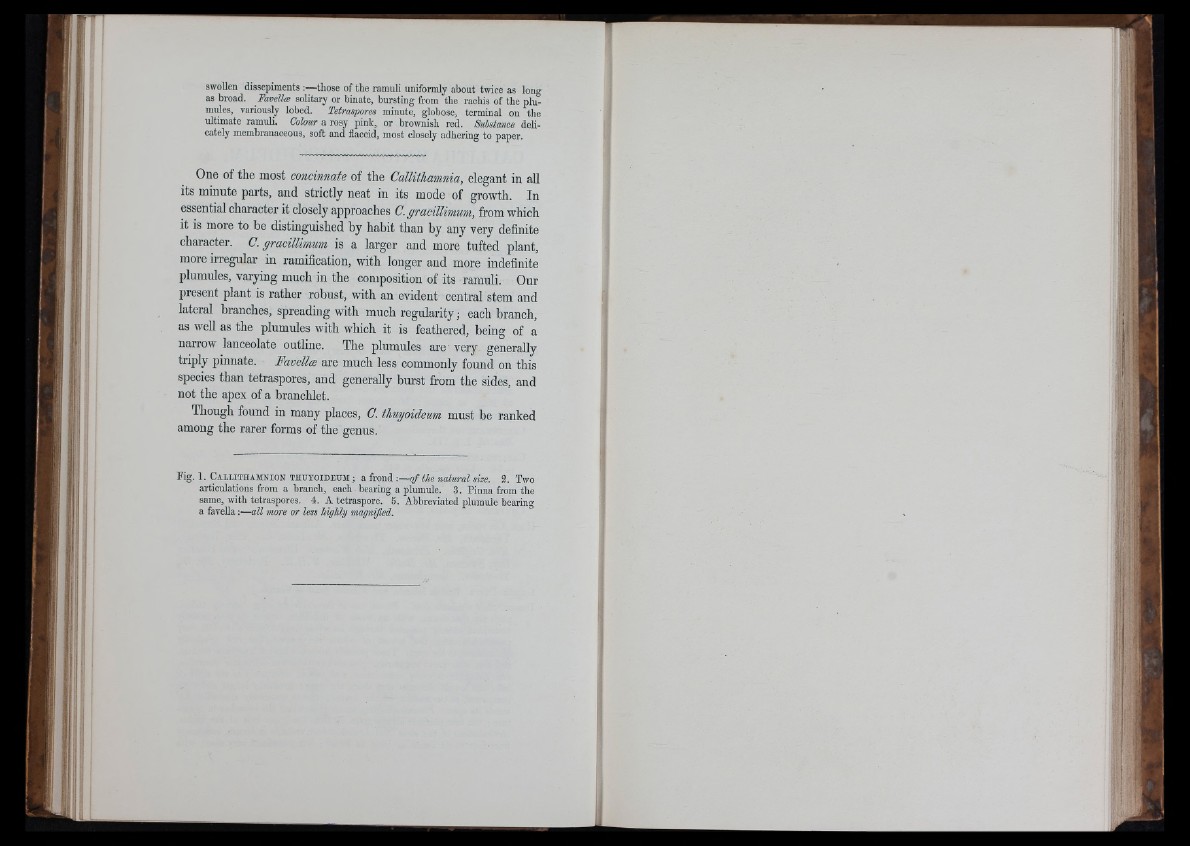
swollen dissepiments :—those of the ramuli uniformly about twice as long
as broad. Javella solitary or binate, bursting from the rachis of the plu°
miUes, variously lobed. Tetraspores miirate, globose, terminal on the
ultimate ramuli. Colour a rosy pink, or brownish red. Substance delicately
membranaceous, soft and flaccid, most closely adhering to paper.
One of the most concinnate of the Catlithamnia, elegant in all
its minute parts, and strictly neat in its mode of growth. In
essential character it closely approaches C. gracillimum, from which
it is more to be distinguished by habit than by any very definite
character. C. gracillimum is a larger and more tufted plant,
more irregular in ramification, witb longer and more indefinite
plumules, varying much in the composition of its ramuli. Our
present plant is rather robust, with an evident central stem and
lateral branches, spreading wdth much regularity ; each branch,
as well as the plumules with which it is feathered, being of a
narrow lanceolate outline. The plumules are' very generally
triply pinnate. Favellæ are much less commonly found on this
species than tetraspores, and generally burst from the sides, and
not the apex of a branchlet.
Though found in many places, C. thuyoideum must be ranked
among the rarer forms of the genus.
Fig. 1 . C a l l it h a m n io n t h u y o id e u m ; a frond -.— o f the natural size. 3 . Two
articulations from a branch, each bearing a plumule. 3 . Pinna from the
same, with tetraspores. 4. A tetraspore. 5. Abbreviated plumule bearing
a favella :•—all more or less highly magnifiei.